Part 6: The 2012 Wilson Research Group Functional Verification Study
Effort Spent On Verification (Continued)
This blog is a continuation of a series of blogs that present the highlights from the 2012 Wilson Research Group Functional Verification Study (for a background on the study, click here).
In my previous blog (click here), I focused on the controversial topic of effort spent in verification. This blog continues that discussion.
I stated in my previous blog that I don’t believe there is a simple answer to the question, “how much effort was spent on verification in your last project?” I believe that it is necessary to look at multiple data points to truly get a sense of the real effort involved in verification today. So, let’s look at a few additional findings from the study.
Time designers spend in verification
It’s important to note that verification engineers are not the only project members involved in functional verification. Design engineers spend a significant amount of their time in verification too, as shown in Figure 1.
Figure 1. Average (mean) time design engineers spend in design vs. verification
In fact, you might note that design engineers now actually spend more time doing verification than design. This time expenditure has shifted in the last five years. In fact, the amount of time that design engineers spend doing verification has increased by 15 percent since 2007, while the amount of time they spend doing design has decreased by about 13 percent.
The designer’s involvement in verification ranges from:
- Small sandbox testing to explore various aspects of the implementation
- Full functional testing of IP blocks and SoC integration
- Debugging verification problems identified by a separate verification team
Percentage of time verification engineers spends in various task
Next, let’s look at the mean time verification engineers spend in performing various tasks related to their specific project. You might note that verification engineers spend most of their time in debugging. Ideally, if all the tasks were optimized, then you would expect this. Yet, unfortunately, the time spent in debugging can vary significantly from project-to-project, which presents scheduling challenges for managers during a project’s verification planning process.
Figure 2. Average (mean) time verification engineers spend in various task
Number of formal analysis, FPGA prototyping, and emulation Engineers
Functional verification is not limited to simulation-based techniques. Hence, it’s important to gather data related to other functional verification techniques, such as the number of verification engineers involved in formal analysis, FPGA prototyping, and emulation.
Figure 3 presents the trends in terms of the number of verification engineers focused on formal analysis on a project. In 2007, the mean number of verification engineers focused on formal analysis on a project was 1.68, while in 2010 the mean number increased to 1.84. For some reason, we did see a slight decreased in the mean number of verification engineers who focus on formal in 2012. Regardless, the curve is remarkably consistent for the past five years.
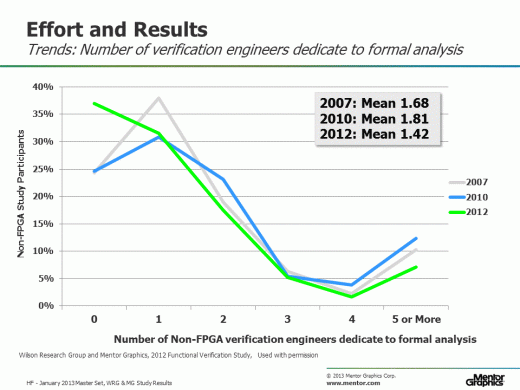 Figure 3. Median number of verification engineers focused on formal analysis
Figure 3. Median number of verification engineers focused on formal analysis
Although FPGA prototyping is a common technique used to create platforms for software development, it is also sometimes used by projects for SoC integration verification and system validation. Figure 4 presents the trends in terms of the number of verification engineers focused on FPGA prototyping. In 2007, the mean number of verification engineers focused on FPGA prototyping on a project was 1.42, while in 2010 the mean number was 1.86. In 2012 we saw a slight decline in mean number of verification engineers focused on FPGA prototyping. However, the curve has been remarkably similar for the past five years.
Figure 4. Number of verification engineers focused on FPGA prototyping
Figure 5 presents the trends in terms of the number of verification engineers focused on hardware-assisted acceleration and emulation. In 2007, the mean number of verification engineers focused on hardware-assisted acceleration and emulation on a project was 1.31, while in 2010 the mean number was 1.86. In 2012, we see a slight decrease in the mean number of verification engineers who focus on hardware-assisted acceleration and emulation.
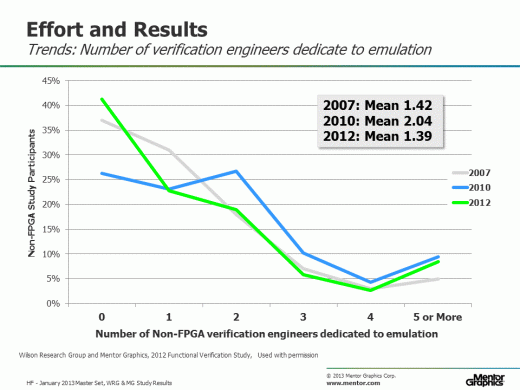 Figure 5. Number of verification engineers focused on emulation
Figure 5. Number of verification engineers focused on emulation
Again, noticed how the curve has been consistent over the past five years. In other words, we are not seeing any big trends in terms of increased verification engineers focused predominately on formal, FPGA prototyping, and hardware-assisted acceleration and emulation. This trend was certainly not true for general verification engineers who focus on simulation-based techniques, as I presented in my previous blog, where we saw a 75 percent increase in the peak number verification engineers involved on a project within the past five years.
A few more thoughts on verification effort
So, can I conclusively state that 70 percent of a project’s effort is spent in verification today as some people have claimed? No. In fact, even after reviewing the data on different aspects of today’s verification process, I would still find it difficult to state quantitatively what the effort is. Yet, the data that I’ve presented so far seems to indicate that the effort (whatever it is) is increasing. And there is still additional data relevant to the verification effort discussion that I plan to present in upcoming blogs. However, in my next blog (click here), I shift the discussion from verification effort, and focus on some of the 2012 Wilson Research Group findings related to testbench characteristics and simulation strategies.
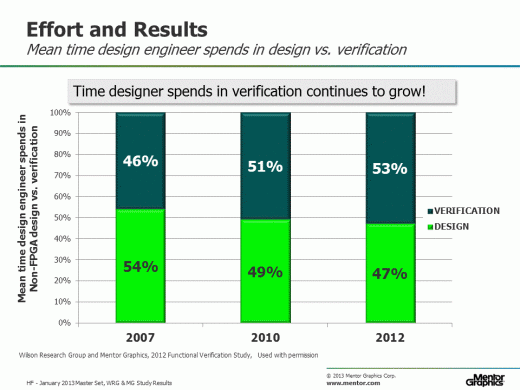
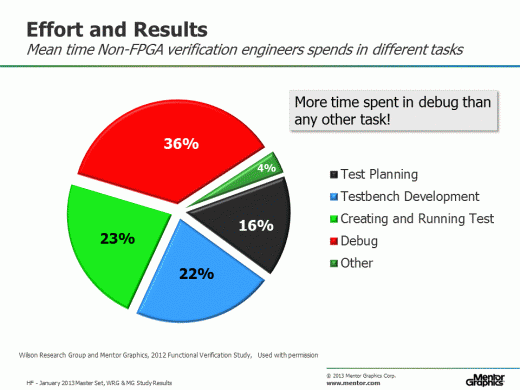
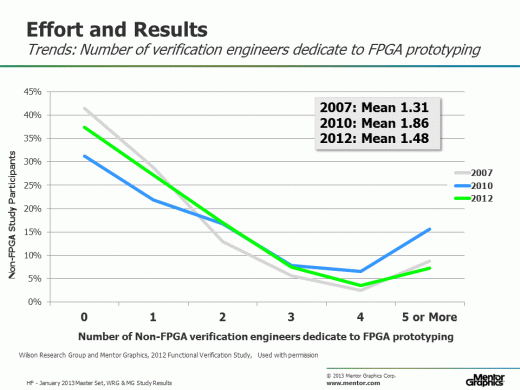


Comments